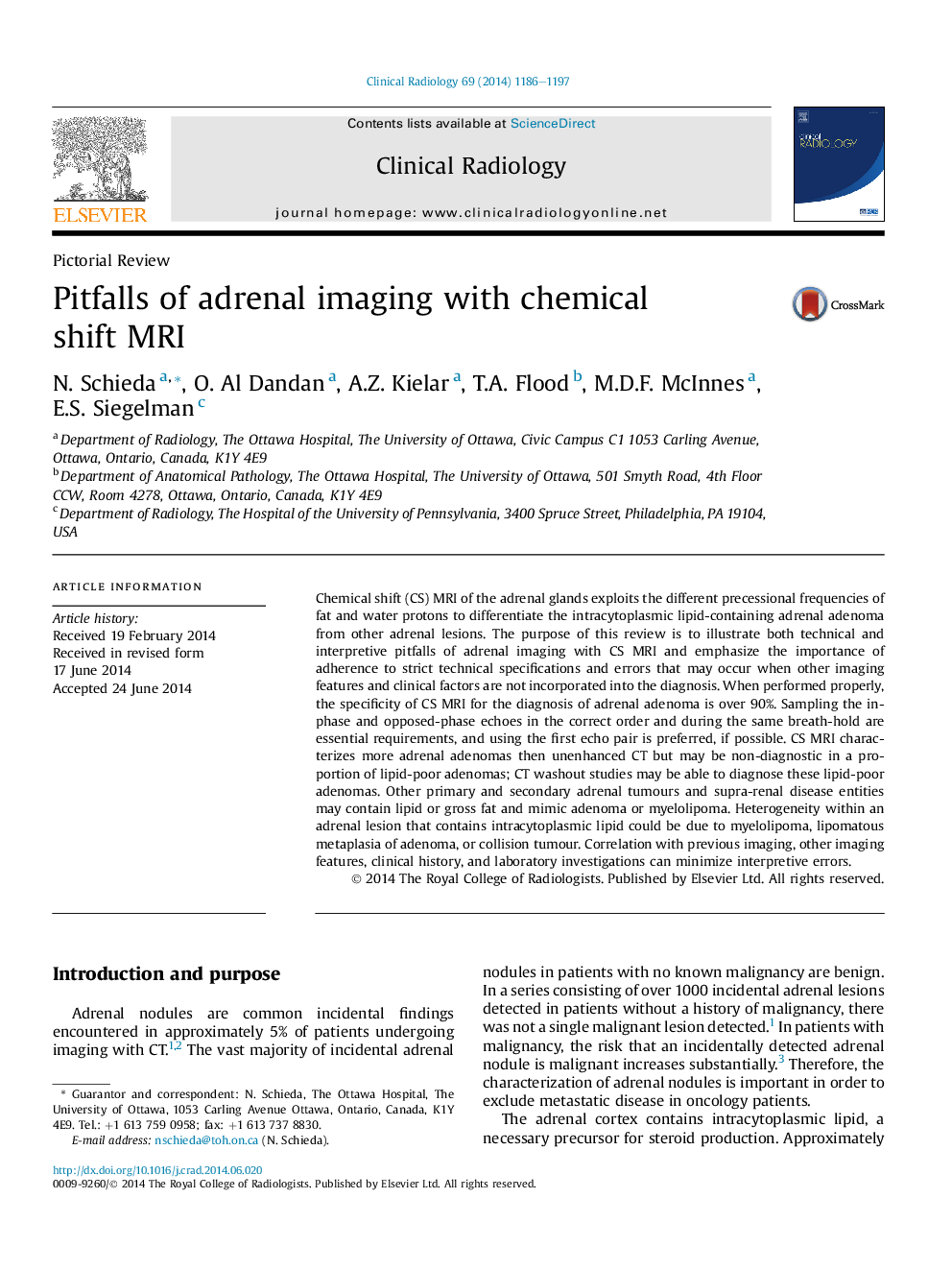| Article ID | Journal | Published Year | Pages | File Type |
|---|---|---|---|---|
| 3981568 | Clinical Radiology | 2014 | 12 Pages |
Chemical shift (CS) MRI of the adrenal glands exploits the different precessional frequencies of fat and water protons to differentiate the intracytoplasmic lipid-containing adrenal adenoma from other adrenal lesions. The purpose of this review is to illustrate both technical and interpretive pitfalls of adrenal imaging with CS MRI and emphasize the importance of adherence to strict technical specifications and errors that may occur when other imaging features and clinical factors are not incorporated into the diagnosis. When performed properly, the specificity of CS MRI for the diagnosis of adrenal adenoma is over 90%. Sampling the in-phase and opposed-phase echoes in the correct order and during the same breath-hold are essential requirements, and using the first echo pair is preferred, if possible. CS MRI characterizes more adrenal adenomas then unenhanced CT but may be non-diagnostic in a proportion of lipid-poor adenomas; CT washout studies may be able to diagnose these lipid-poor adenomas. Other primary and secondary adrenal tumours and supra-renal disease entities may contain lipid or gross fat and mimic adenoma or myelolipoma. Heterogeneity within an adrenal lesion that contains intracytoplasmic lipid could be due to myelolipoma, lipomatous metaplasia of adenoma, or collision tumour. Correlation with previous imaging, other imaging features, clinical history, and laboratory investigations can minimize interpretive errors.
